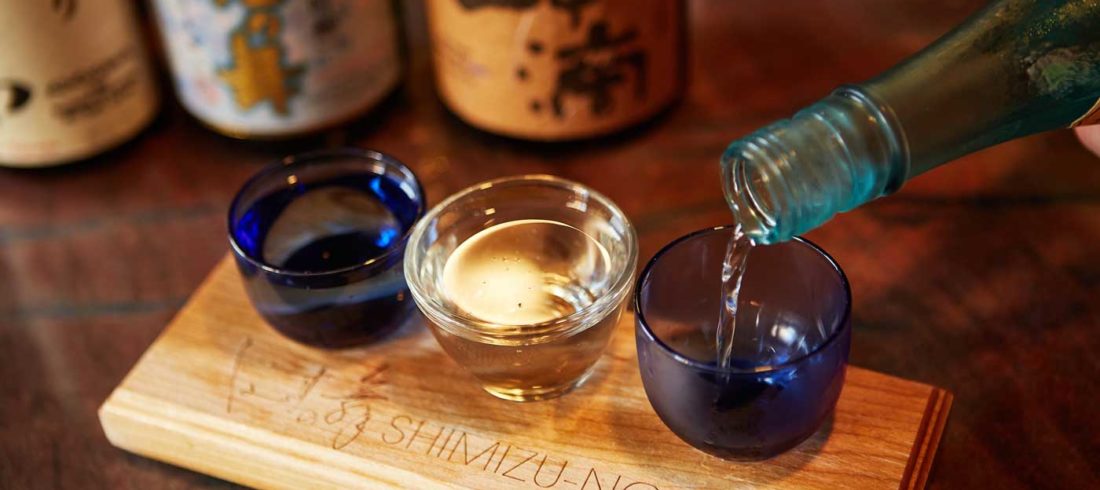Some compare sake to wine, others to beer, but the fermented rice drink of Japan is complex and delicate, holding its own next to any good wine, craft beer, or fine spirit.
Regardless of how you categorize it, craft sake is having a bit of a moment, more than a millennium after the libation was first distilled in Japan. In 2015, the documentary The Birth of Sake screened at the Bend Film Festival to critical acclaim. As the film shows, the ancient brew comes from a beautiful, disciplined tradition of dedicated sake-makers working nonstop through snowy winters, their hands kneading steaming mountains of rice.
 In Oregon, a new sake tradition is bubbling up too. Portland celebrates the 7th Annual SakeFest June 21, whose major sponsor is SakeOne, a Forest Grove-based craft sake producer whose different lines include Moonstone, G Sake, and Momokawa.
In Oregon, a new sake tradition is bubbling up too. Portland celebrates the 7th Annual SakeFest June 21, whose major sponsor is SakeOne, a Forest Grove-based craft sake producer whose different lines include Moonstone, G Sake, and Momokawa.
The Eugene area has several options for sake-tasting from “sake bar and pub” Izakaya Oyazi, which serves the drink hot, cold, and in flights, to Izakaya Meiji in the Whiteaker neighborhood with its selection of sakes and sake-infused dishes. Izumi Sushi and Grill in Crescent Village serves SakeOne brews as well as more than a dozen from Japan.

In fact, most Japanese or sushi restaurants will have at least one bottle on hand, as do many grocery stores and bottle shops if you want to sip it at home. Here’s a sake primer before you saveur the ancient beverage and its countless iterations.
First, let’s settle the issue of whether sake is wine or beer. Broadly speaking, wines are made with fruit and beers are made with grains, so the common term “rice wine” is a bit of a misnomer. The production and fermentation process is similar to beer, but when it comes to drink service and alcohol strength (up to 20 percent ABV), sake comes closer to wine.
The key to sake is its complexity. Like wine, part of sake’s allure comes from its aroma, specifically aromatic esters that comprise what we experience through our senses. Wines have about 200 aromatic esters — sake has 400.
Four ingredients make sake: water, yeast, rice, and its true secret ingredient: koji (more on that in a bit). While grapes are crushed in winemaking, in sake production rice is polished. To remove impurities that can adversely affect fermentation, sake-makers use a polishing process that can take up to 72 hours, removing 30 to 60 percent of the grain.

Many factors determine overall quality, but, broadly speaking, the longer the milling and polishing, the more refined and premium the sake.
The remaining rice kernel is steamed and then inoculated with koji. Similar to how miso paste is made from a culture of soybeans and mold, in sake, koji is a culture of rice and the mold Aspergillus oryzae. After two days, shubo, or seed mash, begins. Yeast and water are added to the koji, and the alchemy of fermentation gets fully underway in the primary mash, or moromi. Following pressing and filtration to clarify it, the sake will be pasteurized, packaged, and aged, often for six months (but it can also be consumed sooner as fresh sake, or shinshu).
Sake producers create around 24,000 varieties of sake. Just as wine and beer have distinct styles as well as outliers, sake has sub-styles and truly unique brands. Overall, sake falls into six broad categories:
Junmai: Milled 30 percent, with 70 percent of each rice grain remaining.
Honjozo: Same milling as Junmai but with some distilled alcohol added.
Junmai Ginjo: Milled 40 percent, with 60 percent of each rice grain remaining.
Ginjo: Same milling as Junmai Gingo but with some distilled alcohol added.
Junmai Daiginjo: Milled 50 percent, with 50 percent of each rice grain remaining.
Daiginjo: Same milling as Ginjo but with some distilled alcohol added.
Sake can be served warm or cold, depending on the style. Warming sake enhances the alcohol and umami character over aroma, so save heating for sakes such as Honjozo or Junmai. As with wine and beer, sake can be served in a variety of serving vessels, such as a traditional ochoko (a small ceramic cup, especially good for heated sakes). When showcasing a sake’s aromatic profile, use a stemmed wine glass, sherry glass, or tulip beer glass. With is broad range of varieties, flavors, and aromas, sake is every bit as complex as today’s wines, beers, and spirits. It deserves a place in your glass.


